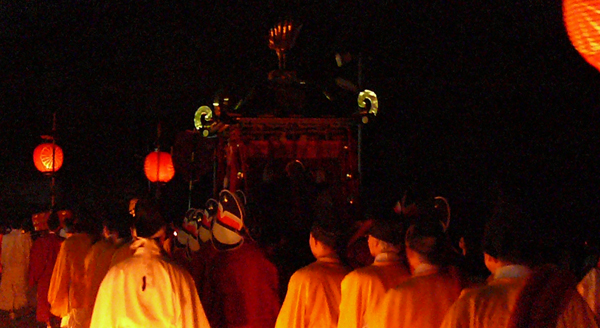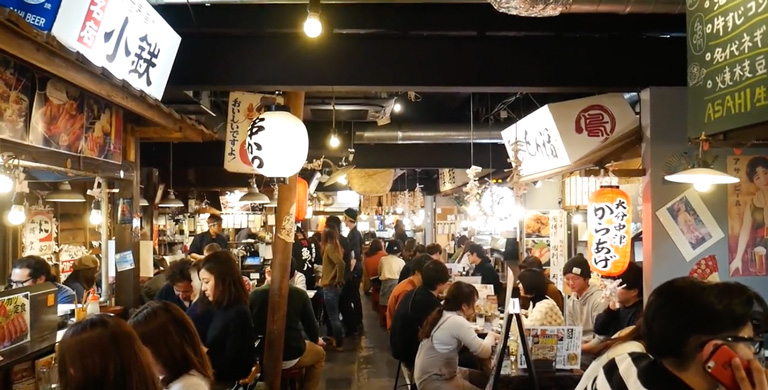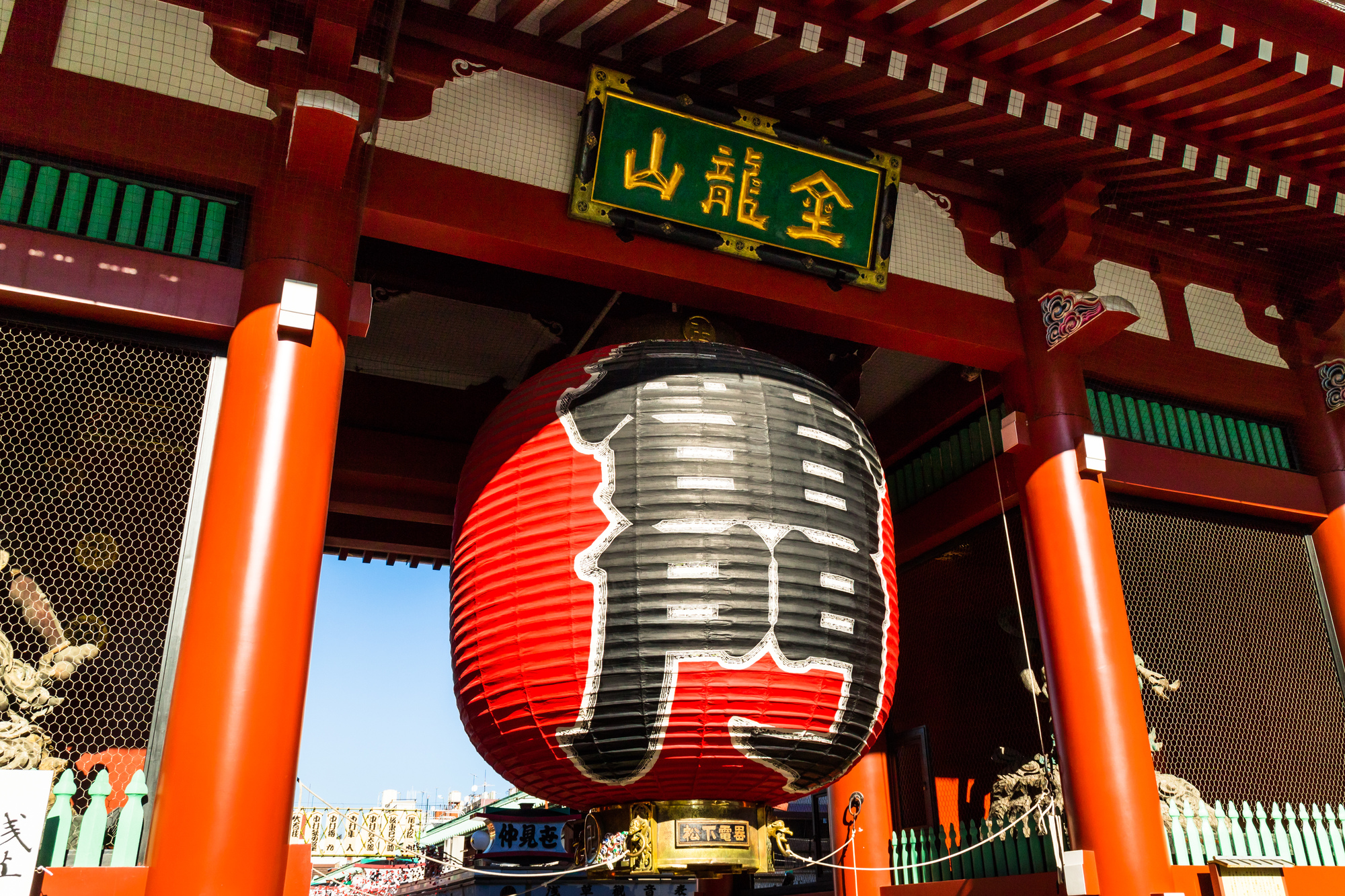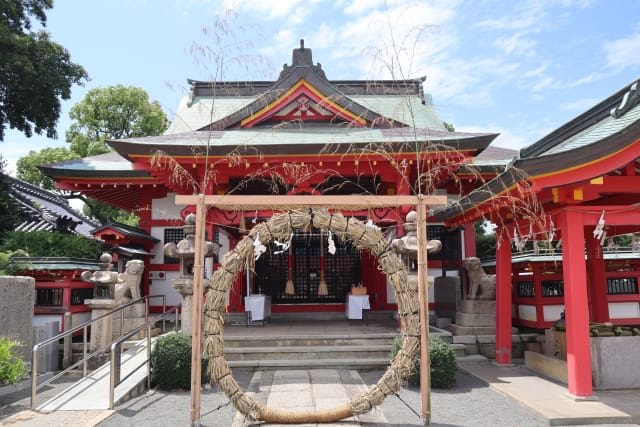Best 10 Traditional Festivals “Matsuri” held in Kyoto in September 2017 (w/Photos)
Kyoto is the ancient capital of Japan, which still remains the historical atmosphere everywhere. Observing the traditional festival in the cozy streets makes it more impressive to feel Japanese culture and history. In autumn, it’s getting less hot than in summer, the best time of the year for visit Japan. Taking part in must-see festivals held in Kyoto in autumn, enjoy your trip!
**1.Chokusai Iwashimizu Festival ****-September 15th
**
Source : http://www.iwashimizu.or.jp/saiten/one.php?seq=187
This is one of the Japanese three major Chokusai Festivals along with the Aoi Festival and the Kasuga Festival.
Iwashimizu Hojo-e (ceremony in which animals are released into the wild) has originated in 863 during the reign of Emperor Seiwa as a festival to pray for peace and happiness of all living beings.
The style of the festival has been unstable and following many twists and turns, restored to the current form in 1945.
The festival starts at 2:00 a.m. At 3:00 a.m., Go-Horen (imperial carriage) in the shape of portable shrine accompanied by 500 attendants came down from the main hall on the mountain top to the foot of the mountain. The scenery of the parade is so graceful, being admired as “active classics”.
At 5:00 a.m. *Hoheisai *(a ceremonial offering to the deity) is performed in the silence, followed by the event of Hojo-e, in which captive fish and birds are released into Hojo-gawa river at 8:00 a.m.
The parade is a reenactment of an imperial procession during the Heian dynasty. It’s so dramatic scenery, showing a part of Japanese history.
This is the most important ceremony among the 100 more festivals which are held yearly in the Iwashimizu Hachimangu Shrine. It has a good reason to be one of the must-see festivals.
Schedule
September 15th ,2017 AM2:00〜
Access & Address
30 minutes on foot from the Keihan “Yawatashi” station
※To the Tonguu at the foot of mountain, about 3 minutes on foot
Iwashimizu Hachimangu Shrine
30 Yawatatakabo, Yawata-city, Kyoto
Lat: 34.879674 Long: 135.700052
Admission & Price
Free Admission
No reservations needed
Official Site
http://www.iwashimizu.or.jp/event/chokusai.html
2.Toyokuni Shrine Festival & Kencha Festival - September 18th,19th
Source : http://www.the-kyoto.jp/photo/2015/09/2442/
August 18th on the lunar calendar is the anniversary of the death of Hideyoshi Toyotomi. It’s converted to the solar calendar on September 18th, when the festival is held at the Toyokuni Shrine.
At the festival, the shrine ritual is performed solemnly and Japanese sacred dance and music is offered to the deity in front of the main hall.
Although guests without invitation are not allowed to participate in the regular ceremony, it’s permitted to view the dance and music from the front of the offertory box located under the Kara-mon gate, which is designated as a national treasure.
On every 18th of the month, a flea market named “Hokoku-san’s Omoshiro Market” is held within the shrine precinct. It’s alive with various street booths lined up, as it is on the day of the festival as well.
On the 19th, Kencha Festival (tea ceremony) is held, performed by* Iemoto*, the head of the* Yabunouchi *school of tea.
At the Kencha festival, Koicha (thick tea) and Usucha (thin tea) are each offered to the deity, Hideyoshi and Kita no Mandokoro (legal wife) who has been enshrined at the Sadateru Shrine, by the head of the Yabunouchi school of tea.
After the ceremony, green tea will be served to the public at the tea room and drawing room within the shrine precinct.
You can experience Japanese tea culture. Why not give it a try?
Schedule
September 18th, 2017 AM11:00〜 Offering the Bugaku (sacred dance and music) and shrine maiden’s *Kagura-mai *(ceremonial dance) to the deity
September 19th, 2017 AM10:30〜 Kencha Festival by the head of the Yabunouchi school of tea
Access & Address
7 minutes on foot from the Keihan “Shichijo” station
5 minutes on foot from the City Bus “Hakubutsukan Sanjusangendo-mae” stop
530 Yamato Oji Shomen Chaya-cho, Higashiyama-ku, Kyoto-city, Kyoto
Admission & Price
Free Admission
No reservations needed
3.Seimei Festival - September 22nd,23rd
Source : http://www.seimeijinja.jp/archives/category/feature/seimeisai
At this festival, the enshrined god is Seimei Abe, who was an astronomer and Onmyoji (Yin Yang sorcerer) in the middle of Heian period.
He is well known as the founder of Onmyoudou (way of Yin and Yan), who set a rule for the calendar construction, annual events and divination which are the basis of the current daily life. He has been used for the main character of a manga comic book, which has helped attract people to the festival from all parts of the country nowadays.
“Seimei Festival” is the most important ceremony at the Seimei Shrine throughout the year.
The festival is held in consecutive 2 days. On the 1st day, Yoimiya festival (eve festival) is performed with the contents of the procession of Mukae Chochin (welcoming lanterns) and the offering of Yudate Kagura (boiling water ritual combined with sacred dance and music). On the 2nd day, Shinko-sai Festival is performed, at which a parade goes through the local residential area. The parade is made up by about 500 people in total, lining up and walking through the town.
Shinko-sai means a festival of a divine visit. *Seimei *is thought to descend to the place once a year.
With taking part in this cheerful festival, holy spirits may encourage you.
Schedule
September 22nd (Fri),2017 PM7:00〜 Yoimiiya festival
September 23rd(Sat/holiday),2017 PM1:00〜 Shinko-sai (a festival of a divine visit / portable shrine parade)
Access & Address
2 minutes on foot from the City Bus Route #9 or #12 “Ichijomodoribashi・Seimei Jinja-mae” stop, or Route #12 or #59 “Horikawa Imadegawa” stop
12 minutes on foot from the Subway “Imadegawa” station
Seimei Shrine office
Seimei-cho, Ichijonoboru, Horikawa-street, Kamigyo-ku, Kyoto-city, Kyoto
Admission & Price
Free Admission
No reservations needed
Official Site
http://www.seimeijinja.jp/event/
4.Hassaku** **Festival - September 3rd
Source: http://www.matsunoo.or.jp/
** **
Hassaku Festival at Matsuo Taisha Shrine is known as a sign of post-summer letdown milestone in Kyoto.
Hassaku means August 1st on the lunar calendar, when chronic seasonal devastation by such as hurricane frequently occurs. Original primary intention of this festival 130 years ago was to pray for the rich harvest and for the safety of the family to remedy the situation.
One of the features of this festival is Hassaku Sumo competitions held to dedicate to the shrine on that very day of “Hassaku”. Team-based competitive match by elementary school kids, babies on the arena and so on will provide groovy fever pitch to the audience.
You will have an opportunity to observe live performance of Saga Rokusai Nembutsu, which is alleged to be offered to the deity at* Matsuo Taisha* Shrine by *Kukai *nobility in the Heian period. It’s designated as the intangible cultural heritage and is a must-see performance,
Moreover, other performances such as women’s portable shrine floating in Arashiyama and Taiko drum dedication play to Kamikatsura Mitama spirit will also be demonstrated.
Hassaku Festival is the closing remarks of summer in Kyoto. Enjoy another kind of atmosphere while feeling hot breeze gone with the festival.
** **
Schedule
September 3rd,2017 (Sun)AM10:00〜
Access & Address
Starting at the Kyoto station, taking the City Bus Route #28, right after get off at “Matsuotaisha-mae” stop
Starting at the Kyoto station, taking the Kyoto Bus Route #73 or #83, right after get off at “Matsuotaisha-mae” stop
5 minutes on foot from the Hankyu Railway Arashiyama Line “Matsuotaisha” station
3 Arashiyamamiya-machi, Nishikyo-ku, Kyoto-city, Kyoto
Lat:** 34.999967** Long: 135.685173
Admission & Price
Free Admission
No reservations needed
Official Site
** **
5, Kamigamo Maple Leaves Dance & Song - September 9th
Source : http://www.the-kyoto.jp/calendar/list9.html
** **
Kamigamo Shrine is the oldest shrine in Kyoto. Enshrined widely here is the god of thunder can get rid of innumerable plagues or disasters from the world, called as Yakuyoke Myojin.
Various festivals are held all the year around here. In every autumn, Maple Leaves Dance & Song festival takes place, which bunch of women put on Yukata (informal cotton kimono) with short-length apron and cross-tie dance in unison with traditional folk songs such as named “Momiji no Nishiki”, “Oumi Hakkei” and “Soushi Arai Komachi” at around *Ichi no Trii *(the 1st archway to Shinto shrine) of Kamigamo Shrine.
The reason why the festival is named Kamigamo Maple Leaves Dance & Song is because Kamigamo Shrine is famous for its beautiful autumn leaves. Maple Leaves Dance & Song, a.k.a. “Momiji Ondo” is designated as intangible folklore cultural asset of Kyoto City.
At the festival, why don’t you catch the touch of autumn before maple leaves peak?
** **
Schedule
September 9th(Sat),2017 PM8:00〜 ※In case of rain, performed indoors, not to be postponed
Access & Address
15 minutes by the City Bus from the Subway Karasuma Line “Kitaoji” station
339 Kamigamomotoyama, Kita-ku, Kyoto-city, Kyoto
Lat:** 35.059598** Long: 135.751738
Admission & Price
Free Admission
No reservations needed
Official Site
http://www.kamigamojinja.jp/index.html
** **
** 6.**Mitakari Festival - September 10th
Mitakari festival has its origin from 1717. It’s a sumo wrestling ritual dedicated to the deity to appreciate for rich harvest and everlasting for 290 years as of today.
The main event of this festival is votive sumo performance. At this event, two sumo wrestlers from the east and the west are supposed to hold two matches and win one, lose one. That means the oath to god to live a good life without fighting and to get along helping each other.
After the main ritual of Mitakari festival as above, offering of arena-entering ceremony by Yokozuna (grand champion) boys and dedicated sumo performance follows. You can see a unique custom of dedicatory wrestling matches, at which the sacred sumo wrestler holds Japanese writing paper with purified salt in it with his mouth and purifies four pillars by Japanese sake.
Moreover, there are popular events “Kid’s wrestler arena-entering ceremony” by the local elementary students and “Baby’s Sumo Match” by around 1 year baby boys.
You can also enjoy a night concert by the shrine parishioners within the shrine precinct at night of the festival.
Schedule
September 10th (Sun),2017 AM10:00〜
Access & Address
Starting at the Hankyu “Higashimukou” station, taking the Hankyu Bus bound for “Minamikasuga-cho” for about 20 minutes to the last stop “Minamikasuga-cho”, then taking 7-8 minutes on foot
Starting at the Hankyu “Katsura” station, taking the City Bus Route #Rinsei-2 for about 20 minutes to the last stop “Minamikasuga-cho”, then taking 7-8 minutes on foot
Starting at the JR “Mukoumachi” station, taking the Hankyu Bus bound for “Minamikasuga-cho” for about 20 minutes to the last stop “Minamikasuga-cho”, then taking 7-8 minutes on foot
Oharano Shrine
1152 Minamikasuga-cho, Oharano, Nishigyo-ku, Kyoto-city, Kyoto
Lat:** 34.959751** Long: 135.656608
Admission & Price
Free Admission
No reservations needed
Official Site
7.Kurumazaki Shrine** ****Choyo Ceremony - September 9th
**
Source : http://www.kurumazakijinja.or.jp/tyouyousai2.html
** **
Kurumazaki Shrine is located at Saga, Ukyo-ku in* Kyoto*-city, which is well known for its subsidiary shrine within the main precinct as the shrine of public entertainment.
Choyo ceremony, which is held in autumn at this shrine, was revived in 1997 for the first time in 130 years.
Originally, it was aimed to celebrate Choyo festival on September 9th, which had been held in such a magnificent manner of syncretism of Shinto with Buddhism until the late Edo period.
At the former Choyo ceremony held in the* Kurumazaki Shrine during Edo* period, rituals as well as taking turns reading Dai-Hannya-kyo (Great Perfection of Wisdom Sutra) have been allegedly performed.
At the revived ceremony, prayer for beauty and health, votive chrysanthemum flowers and Bugaku (sacred dance & music) are offered to the deity.
As it’s the Bugaku for Choyo ceremony, you can see the performers putting chrysanthemum flower on their heads while elegant dance performance.
Moreover, an applicant of special prayer at the day of ceremony can get an “exceptional charm effective for beauty and health”.
A free cup of chrysanthemum sake, which allegedly has divine power to drive disaster, will be offered to visitors after the ceremony. Let’s drink the chrysanthemum sake after the ceremony!
Schedule
September 9th (Sat),2017 PM1:00〜
Access & Address
35 minutes by the City Bus from the JR “Kyoto” station, right after get off at “Kurumazaki Jinja-mae” stop
Kurumazaki Shrine
23 Saga Asahi-cho, Ukyo-ku, Kyoto-city, Kyoto
Lat: 35.01621 Long: 135.688947
Admission & Price
Free Admission
No reservations needed
Official Site
http://www.kurumazakijinja.or.jp/
8.Obaku Hotei Festival - September 8th
Source: https://pixta.jp/photo/31418971
** **
Obaku-san Manpuku-ji Temple is a Japanese temple of Zen Buddhism, however, it retains a lot of contemporary Chinese architecture in various parts. The reason why is because this temple is the place of worship for the “Hotei”, regarded as a god originally came from China.
On the 8th of every month, which is the monthly holy day of Hotei-son (image of Hotei) considered as an incarnation of* Miroku Bosatsu* (Bodhisattva Maitreya), “Hotei Festival” is held at the temple to worship.
You can make a prayer to Hotei and to join the flea market at this festival.
There are various kinds of handmade crafts produced by wide-ranged manufacturer from amateur to professional at the market.
Another cultural event associated with the temple is a tea ceremony, Ochaseki, at which you can taste authentic Maccha (green tea) in Japanese way of tea.
Japanese tea ceremony has unique steps and you can learn the steps on this occasion!
** **
Schedule
On the 8th of every month
※Unavailable in February and August
Access & Address
5 minutes on foot from the JR Nara Line “Obaku” station
5 minutes on foot from the Keihan Uji Line “Obaku” station
Obaku-san Manpuku-ji Temple
34 Sanbanwari, Gokasho, Uji-city, Kyoto
Lat: 34.915066 Long: 135.807289
Admission & Price
Free Admission
No reservations needed
Official Site
http://www.obakusan.or.jp/hotei.html
**9.Koubou san **– September 21th

Source: http://lunasan.sakura.ne.jp/kihon/h231121/mainm.html
Toji Temple, which is featured by its high-rise 5-story pagoda, has been designated to one of the world heritage sites. In contrast to its quiet and magnificent atmosphere as usual, a lively flea market called “Koubou-ichi” is held on the 21st of each month at the temple. Quite a lot of various clothes and antique pottery – including tableware and flower vase – are on sale at the market. For this reason, the market is called “Nuno-ichi (Clothes Shop)”, “Kottou-ichi (Antique Shop)” or “Koubou-san”, which has been familiarized among local inhabitants for long.
You can buy clothes and/or Obi (sashes) for kimono, which seem nice as souvenirs. You can also choose various kinds of potteries such as dish, cup, ceramic bowl, flower vase or else. Otherwise you can get tortoiseshell Kanzashi (ornamental Japanese hair pin) at the craft market booth.
Nowadays it’s lively with as many as about 1,200 booths at Koubou-ichi. Check the schedule. It must be fun!
Schedule
On the 21st of every month AM5:00〜PM4:00
Rain or Shine
Access & Address
10 minutes on foot from the Kintetsu “Toji” station
15 minutes on foot from the JR “Kyoto” station
In the precinct of Toji Temple
1 Kujo-cho, Minami-ku, Kyoto-city, Kyoto
Lat: 34.982003 Long: 135.747854
Admission & Price
Free Admission
No reservations needed
Official Site
10.Kitano Tenmangu’s Ennichi “Tenjin san” - September 25th
Kitano Tenmangu is the founding head shrine of 12,000 Tenmangu and Tenjin Shrines throughout Japan, enshrining the deity of learning “Michizane Sugawara”.
During the Edo period, the system of private edicational school “Terakoya” to teach reading, writing and arithmetic had become popular in various places in Japan. People had enshrined the god Tenjin or put up the portrait of Michizane in the schoolroom to pray for academic achievement and advance in martial arts. Based on this background, Michizane Sugawara has been widely known as “the deity of learning” and “the deity of performing arts”.
The 25th of every month is this shrine’s Ennichi (the monthly holy day), known as “the day of Tenjin san”.
The number of 25th derives from the date of birth of Michizane Sugawara, June 25th, and the date of his demise, February 25th.
On the day of Ennichi, shrine’s approaches are lined up with various street booths from around 6:00 a.m. until 9:00 p.m. and the shrine precinct will be lit up after dark, which makes it a festival. With 350 stone lanterns and 250 hanging lanterns being lit up, the shrine buildings including Honden, the main hall designated as a national treasure, are illuminated and rise up attractively. It’s a must-see to visit the fantastic shrine at night in the very different atmosphere from that during the daylight hours. Besides shopping, go for visit!
Schedule
On the 25th of every month AM6:00〜PM4:00
Light up after sunset to PM9:00, Free admission in the shrine precinct
Access & Address
Starting at the JR “Kyoto” station, taking around 30 minutes by the City Bus Route #50 for Ritsumeikan University, right after get off at “Kitano Tenmangu-mae” stop
Kitano Tenman-gu Office
Bakuro-cho, Kamigyo-ku, Kyoto-city, Kyoto
Lat: 35.02787 Long: 135.735798
Admission & Price
Free Admission
No reservations needed



